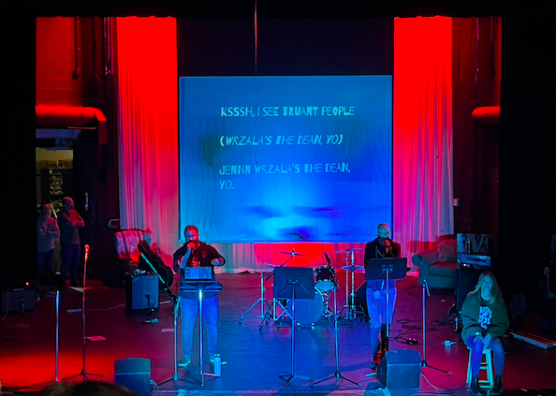Chaos reigns as Musk takes over Twitter
December 16, 2022
After months of legal back-and-forth and tense negotiations, Twitter was finally acquired by Elon Musk this past October for around $44 billion. Though Musk had tried to back out from the deal around July due to an alleged falsehood about fake accounts on the site, he still promised mass changes to the platform under his leadership.
To many observers’ surprise, the massive changes that Musk promised included significant cuts to the workforce behind Twitter within the first week of his ownership.
The workforce cuts proved devastating to countless employees, who received short notice regarding their termination. Furthermore, entire teams of Twitter were dissolved, including the curation and human rights teams. Despite being smaller departments, the teams had critical roles within the organization. For example, the human rights team worked to protect activists, journalists, and victims of tragedies such as the war in Ukraine from harassment online.
Around the same time as these announcements, Musk also dissolved the board of directors, cementing himself as the company’s sole leader.
In response to online outcries of mismanagement, Musk later replied through a tweet of his own, stating, “Regarding Twitter’s reduction in force, unfortunately, there is no choice when the company is losing over $4M/day.”
He revealed that all the laid-off employees would receive three months’ severance pay, which is one and a half times the legal minimum. Still, a New York Times article this week stated Musk reportedly is looking at ways not to pay the severance packages to save money. However, Twitter’s former board of directors has already received an enormous payout, valued at tens of millions each.
Despite the promise of a generous severance package, this move raised legal concerns about how quickly these workers were cut off, especially in countries outside the US. The processes in other nations for how employers may fire employees, especially those backed by unions, are complicated and differ significantly from the US. Thus, Musk letting them all go so unexpectedly and without any indication beforehand has prompted outside legal bodies from the EU to begin investigating the matter. However, any definitive action has yet to take place.
As Musk kept attempting changes to try and increase Twitter’s profitability, another potentially colossal misstep occurred. Twitter Blue was going to be a new paid subscription that would allow members early access to certain features, additional services, and the bonus of a blue checkmark next to their username and profile.
The problem was that while blue checkmarks had previously been a privately-handled verification to identify well-known figures such as political leaders and celebrities, the only requirement barring users from the new Twitter Blue checkmark was an $8 monthly subscription.
This issue promptly grew into a trend of impersonation among online public figures by countless users willing to pay the cost for a quick prank. As long as they changed their username and profile picture while they had the blue checkmark, they were practically indistinguishable from whomever they chose. Such willing users, as it turned out, were countless. McDonald’s, Nintendo of America, and even Elon Musk himself were not spared from online impersonators posting explicit jokes under their names.
These pranks appeared harmless at first, but the severe implications of the security threat quickly became apparent. Another anonymous user following this trend soon took the internet by storm, proclaiming, “insulin is free now!” under the guise of international pharmaceutical company and insulin producer Eli Lilly. Between the tweet’s posting and the official statement calling out the impostor from the real Eli Lilly account, the company’s shares dropped an astonishing 6%, reportedly costing them billions within days.
Consequently, the Twitter Blue program was withdrawn just days after its implementation, exacerbating accusations of Twitter’s mismanagement and showing neglect in properly handling misinformation. The program has slowly been reintroduced over the last week.
These rapid reforms, including unlocking controversial accounts like former President Donald Trump and, most recently, suspending accounts of several critical reporters, have hurt Twitter in more ways than one, aside from the online controversy and outraged users or employees. According to a recent media survey cited by the AP, Twitter has lost half of its top 100 advertisers, while seven more companies have all but cut their ads from Twitter completely. Major players like Apple, Volkswagen, and General Mills were among the companies that ceased advertisements after Elon Musk’s takeover.
All this has put Twitter under fire repeatedly since the transfer, with any changes causing controversy in their community as well as uncertain advertisers leaving Twitter with a budget that may not be able to sustain its employees.
The fact that these issues were caused immediately following the transfer to Musk’s ownership, paired with quotes from Musk himself on the topic of potential bankruptcy, has caused some to wonder whether or not he is genuinely attempting to save the company. To that end, Musk does stand to gain some benefits in that situation. If Twitter were to declare bankruptcy, it might give him a chance to restructure some of his debts and have a chance at refinancing some parts of the company, effectively reducing his overall losses.
Regardless, Musk is sure to act soon. Whether he chooses to try to truly salvage the company or continue to make decision after decision that harms Twitter’s foundation and pushes it toward bankruptcy remains to be seen.


